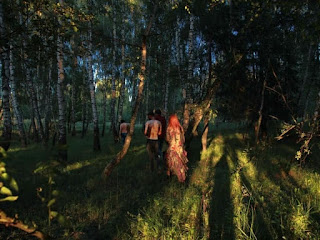The form of this film is technically a romantic comedy,
albeit a particularly straight-faced one.
Yet there are plenty of moments that elicit a smile,
but not in an outright funny manner.
" One and a half Prince" presents relationships with no hint of movie conventions.
As this film has an instinctive realism,
an ear for the way real people talk and interact.
It possesses a knack for drawing multi-layered
It possesses a knack for drawing multi-layered
and always drwas appealing performances out of its cast.
Here characters talk and talk,
frequently about their emotions and what they want.
frequently about their emotions and what they want.
It remains though necessary to read between the lines,
to pick up subtle cues,
to understand that what they say they want
is not necessarily
is not necessarily
what they actually want.
Ana Lungu lays bare the romantic complications of a young actress and three men,
two friends and a potential lover,
with consummate skill.
She turns the film from a conundrum to a poetic,
free-flowing treatise
on relationships and connections.
on relationships and connections.
"One and a Half Prince" is shot in a naturalistic and minimalist style.
What more appropriate expression for its organic,
unhurried
and unrehearsed quality?!
It has long stretches of dialogue that unfold,
performed with effortless ease by the cast
performed with effortless ease by the cast
( Iris Spiridon, Matray Laszlo, Istvan Teglas, Marius Manole)
and it reminisces of Richard Lanklater or Eric Rohmer.
The characters eat, drink, travel, pay visits to cemeteries,
seemingly carefree and revelling in their youthfull age.
But they also indulge with sincerity
in their emotional insecurities.
Which are exactly ours.
One may accuse " A one and a half Prince" of being circular,
meandering
and ambiguous.
and ambiguous.
But this is a film whose sum
is more than its parts.
is more than its parts.
And it articulates deftly the uncertainty of loving someone
—and being loved in return.
Yet,
it is also about embracing the future
as life charts its own course.
Giulia Dobre
































